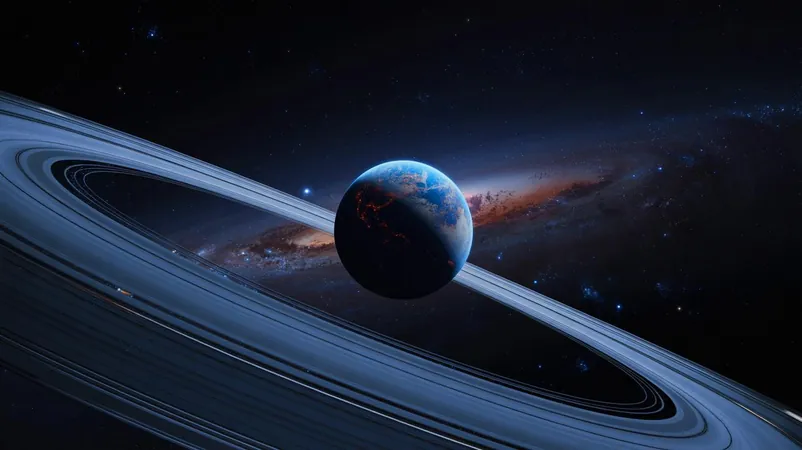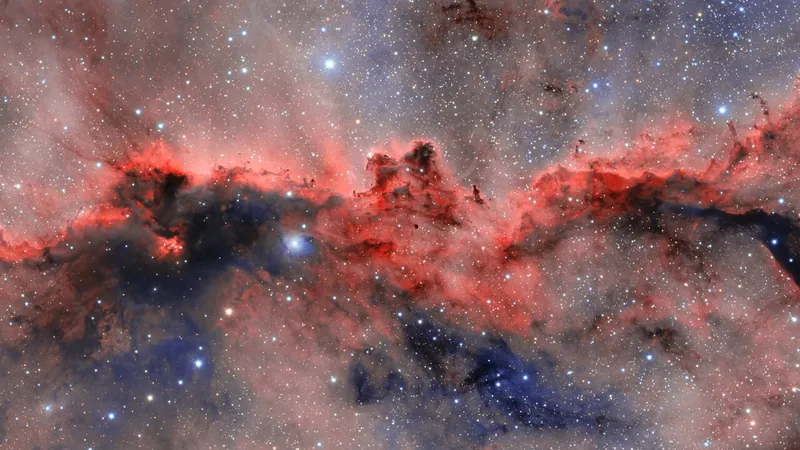
Astronomers Uncover Potential Ninth Planet Beyond Neptune: Is It the Breakthrough We’ve Been Waiting For?
2025-07-06
Author: Jia
A New Hope in the Search for Planet Nine
The elusive Planet Nine has tantalized astronomers and skywatchers for years, and recent reports suggest we might be closer than ever to confirming its existence. Excitement is brewing over a newly identified candidate, but the scientific community remains divided. Could this finally be the breakthrough we've all been yearning for, or merely another illusion in the vast universe?
The Cosmic Mystery of Planet Nine
The concept of Planet Nine arose as a solution to the strange orbits of certain celestial bodies in the Kuiper Belt, a distant region filled with icy relics. Scientists hypothesize that a large, hidden planet could be influencing these orbits with its gravitational force. Yet, proving the existence of this hypothetical planet has proven to be quite challenging.
Recently, researchers have turned their attention to historical satellite data in the hunt for Planet Nine. They scrutinized infrared images from the 1983 Infrared Astronomical Satellite (IRAS) and the 2006-2011 AKARI satellite, where they spotted an intriguing moving dot in the sky—a potential sign of a distant planet.
Doubts in the Scientific Community
While the prospect of discovering a ninth planet is thrilling, it has not escaped controversy. Mike Brown, a prominent astronomer instrumental in proposing the Planet Nine theory, has expressed skepticism regarding these latest findings. His calculations indicate that the object’s orbit does not align with the expected trajectory of Planet Nine, raising questions about its true identity.
Brown is particularly concerned about the significant tilt of the object's orbit, diverging sharply from the anticipated 15 to 20 degrees. This discrepancy suggests that the newly identified object may not exert the gravitational forces necessary to explain the Kuiper Belt's peculiarities. Despite these concerns, many in the astronomy community remain cautiously optimistic, understanding that further observations could provide clarity.
From Glimmers to Celestial Bodies
Transforming a mere dot on the observational radar into a confirmed planet is no small feat. The research team diligently analyzed satellite data to pin down potential candidates for Planet Nine, eliminating known celestial objects before focusing on a dot that appeared in both the IRAS and AKARI datasets.
This particular candidate displayed consistent colors and brightness across the images, indicating it may be a singular object observed by both satellites. However, comprehensive follow-up observations are essential to map the object's full orbit and ascertain its planetary status, adhering to the rigorous standards of scientific inquiry.
A New Era of Discovery Awaits
The future of the quest for Planet Nine looks brighter with the upcoming launch of the Vera C. Rubin Observatory in Chile. Scheduled to open in 2025, this cutting-edge facility, boasting the world’s largest digital camera, will probe deeper into the cosmos than ever before.
Astronomers are hopeful that the advanced capabilities of this observatory will either unveil the long-sought Planet Nine or disprove its existence altogether. This could potentially reshape our understanding of the solar system and bring us closer to solving the universe's great mysteries.
The Endless Pursuit of Knowledge
The hunt for Planet Nine embodies humanity's enduring quest to explore the unknown. As astronomers step boldly into new frontiers, the discovery of this enigmatic planet could revolutionize our comprehension of the solar system. With the Vera C. Rubin Observatory on the horizon, are we about to find the answer—or will Planet Nine continue to elude us in the infinite expanse of space?



 Brasil (PT)
Brasil (PT)
 Canada (EN)
Canada (EN)
 Chile (ES)
Chile (ES)
 Česko (CS)
Česko (CS)
 대한민국 (KO)
대한민국 (KO)
 España (ES)
España (ES)
 France (FR)
France (FR)
 Hong Kong (EN)
Hong Kong (EN)
 Italia (IT)
Italia (IT)
 日本 (JA)
日本 (JA)
 Magyarország (HU)
Magyarország (HU)
 Norge (NO)
Norge (NO)
 Polska (PL)
Polska (PL)
 Schweiz (DE)
Schweiz (DE)
 Singapore (EN)
Singapore (EN)
 Sverige (SV)
Sverige (SV)
 Suomi (FI)
Suomi (FI)
 Türkiye (TR)
Türkiye (TR)
 الإمارات العربية المتحدة (AR)
الإمارات العربية المتحدة (AR)